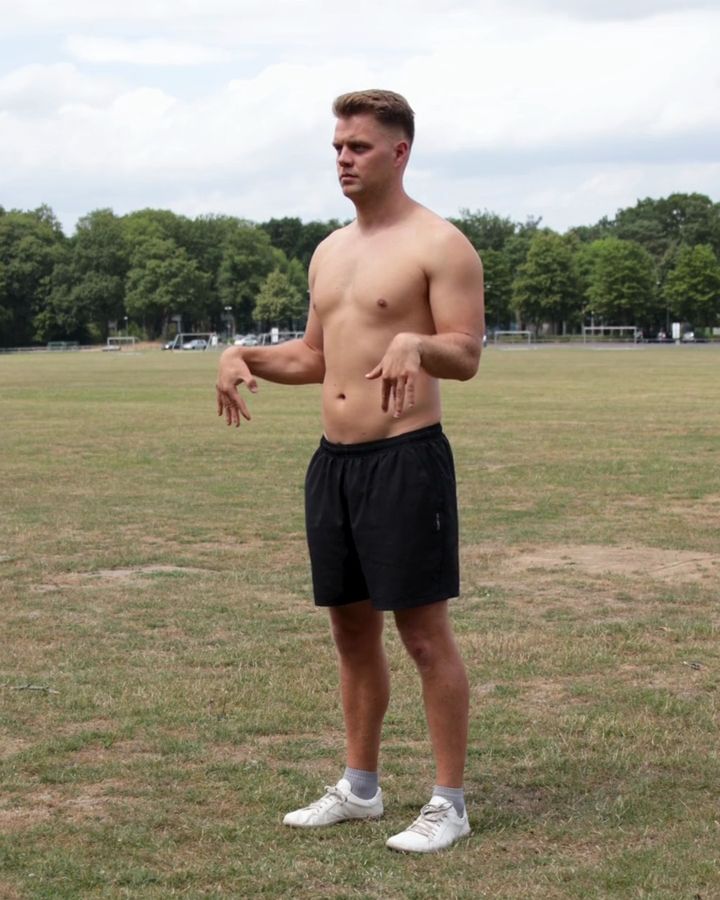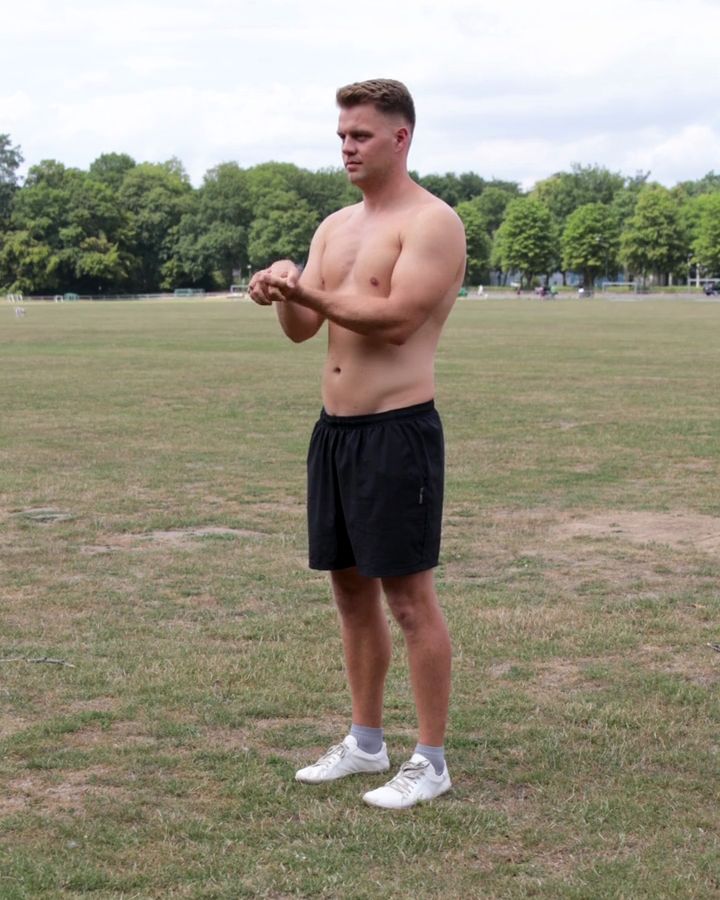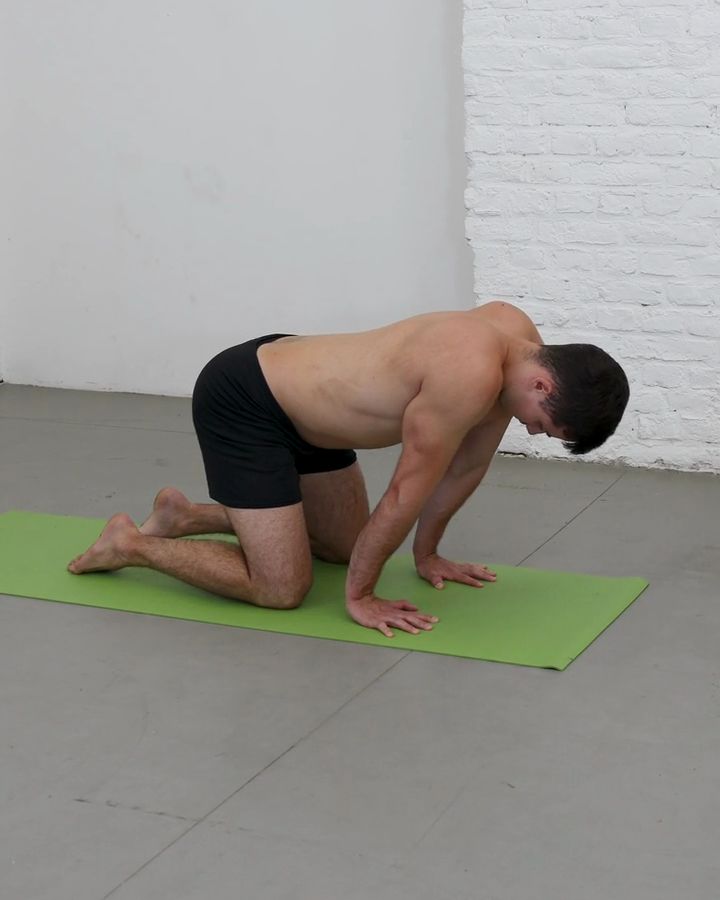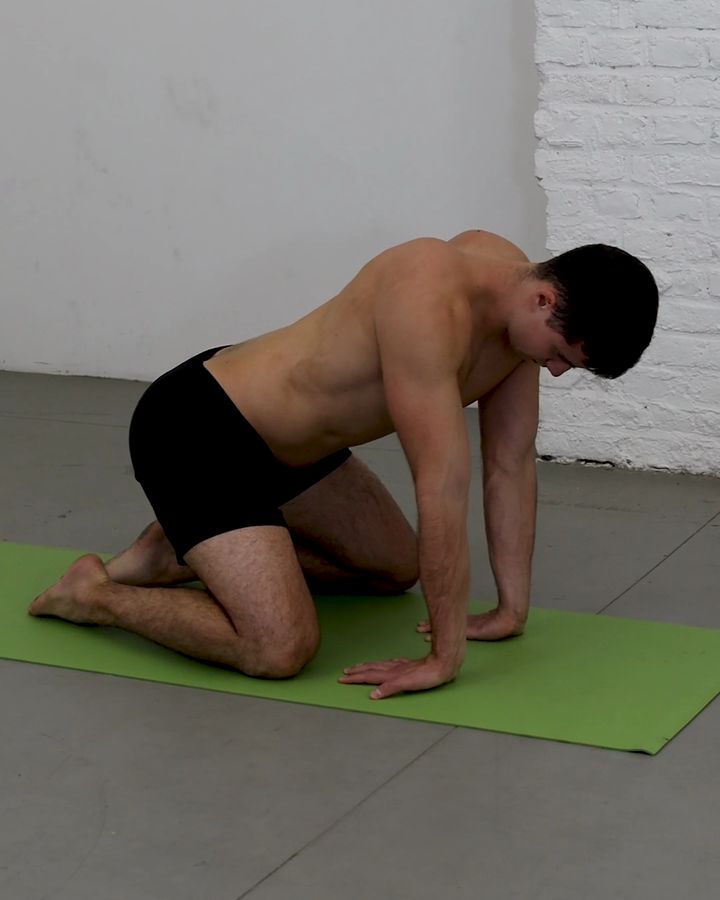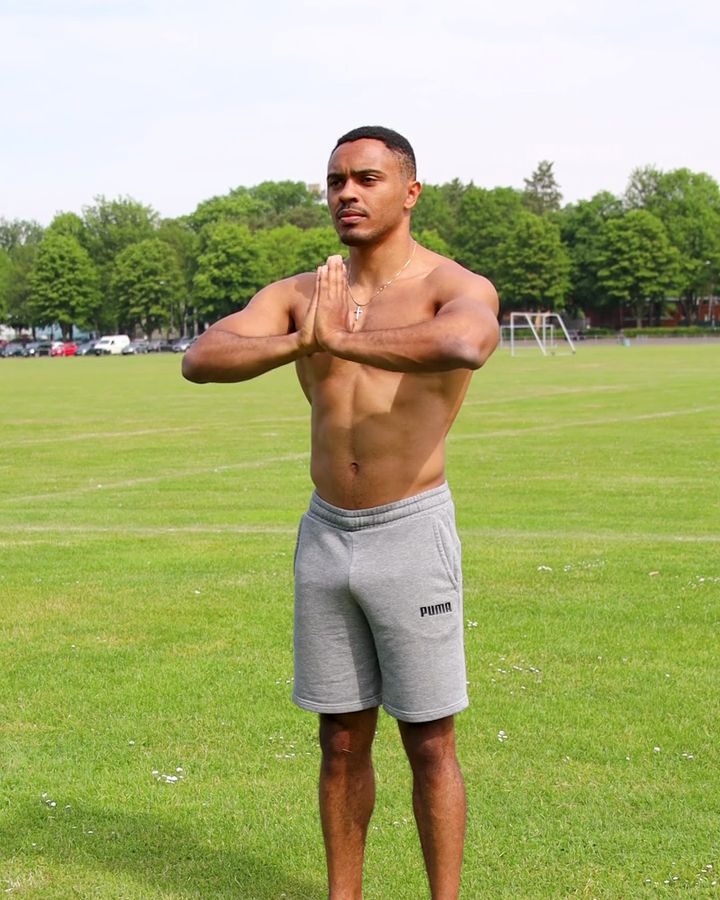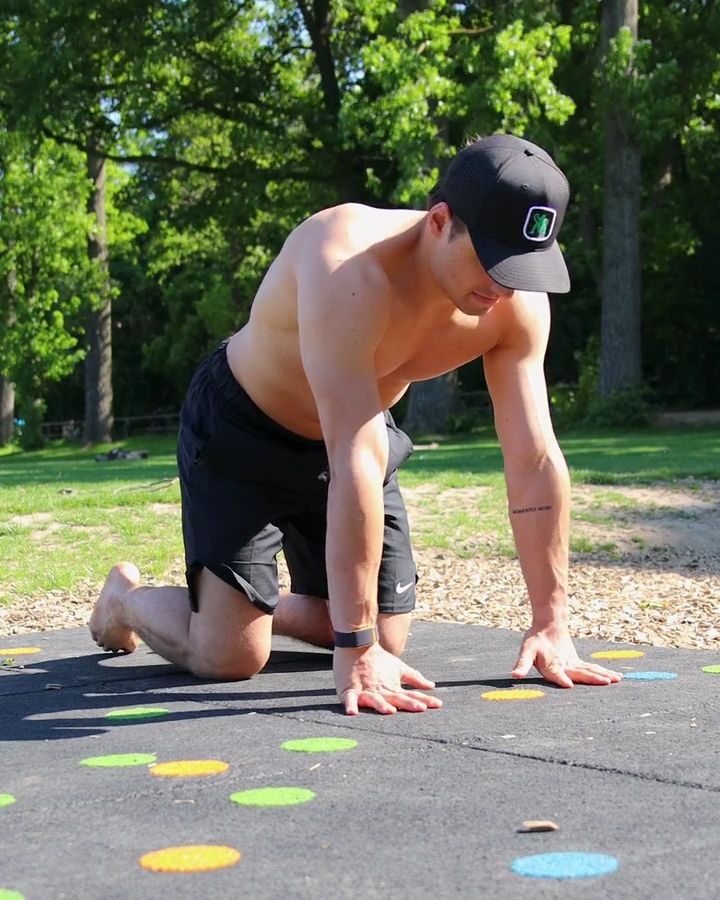How to Strengthen Your Wrists: The 7 Best Exercises for Mobility and Stability
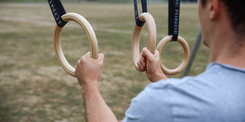
Why Strong Wrists Are Important
How often do you think about training your wrists? While most of us focus on legs, back, or core muscles, wrists are often overlooked. Yet, they’re essential for so many activities in both daily life and sports.
Our wrists are a small but crucial link between the forearm and the hand. Whether you’re holding your smartphone, carrying heavy groceries, practicing yoga, or performing push-ups during strength training, your wrists bear the brunt of the load. If they’re weak or lack mobility, they can quickly become a limiting factor.
What happens when we neglect our wrists? Pain during exertion, reduced mobility, and an increased risk of injury are some of the most common consequences. These issues can not only hinder your training but also negatively affect your daily life. It’s time to give this often-overlooked joint the attention it deserves to enhance stability, mobility, and injury prevention.
Anatomy and Function of the Wrists
The wrists are complex structures designed to provide both movement and stability. The muscles responsible for wrist function include all those that move and stabilize the joint. These muscles often originate at the elbow joint, extend across the wrist, and sometimes reach all the way to the fingertips. This intricate connection makes the wrists both highly functional and susceptible to weakness or overuse.
The Key Players: Wrist Flexors and Extensors
The muscles of the wrist can be divided into two major groups: flexors and extensors.
Flexors: Located on the palm side of the hand, these muscles are responsible for bending the wrist toward the forearm. They include:
- Flexor carpi radialis
- Flexor carpi ulnaris
- Flexor digitorum profundus
- Flexor digitorum superficialis
- Flexor pollicis longus
- Palmaris longus
Extensors: Found on the top side of the hand, these muscles enable wrist extension. They include:
- Extensor carpi radialis brevis
- Extensor carpi radialis longus
- Extensor carpi ulnaris
- Extensor digiti minimi
- Extensor digitorum
What Movements Do These Muscles Support?
The flexors and extensors are responsible not only for wrist flexion and extension but also for lateral movements (abduction and adduction) and stability under load. Whether you’re writing, climbing, or lifting weights, these muscles are essential for strength transfer and mobility.
Why Are Wrist Muscles Prone to Weakness and Injury?
The wrists are among the body’s weakest links. They rely primarily on the forearm muscles for stabilization, which is a relatively small muscle group. At the same time, wrists endure significant stress in daily life and sports. From carrying heavy objects to performing handstands, pull-ups, or yoga poses, wrists often bear loads far beyond what they were originally designed for. Without targeted wrist training, this can quickly lead to overuse, pain, or even injuries.
Strengthening the wrist muscles is a worthwhile investment. It’s the only way to improve mobility, stability, and resilience in the long term—making your training more effective and your daily life pain-free.
Risks of Neglecting Wrist Training
Wrists play a central role in many daily movements and athletic activities. Failing to train them adequately can lead to far-reaching consequences, from reduced mobility to an increased risk of injury. Here are the top three risks of neglecting your wrists:
1. Limited Wrist Mobility
Wrist mobility is crucial for performance in both everyday tasks and sports. Restrictions in this area can severely limit your abilities. This becomes especially apparent during exercises like handstands, push-ups, or pull-ups in calisthenics, where free wrist movement is essential. Without sufficient mobility, you’ll struggle to execute movements correctly and safely, hindering your progress and increasing the likelihood of posture issues and overuse injuries.
2. Ineffective Training
Weak or immobile wrists can compromise your entire workout. Imagine your target muscles—whether it’s your chest, back, or biceps—still have energy, but your wrists give out. Suddenly, you’re forced to stop the exercise even though you could have pushed further. This is common during exercises like push-ups, planks, or handstands, where wrists bear significant loads. Without the necessary stability and strength, you won’t unlock your full training potential.
3. Risk of Injury
Wrists are particularly vulnerable to injuries because they’re relatively fragile and frequently subjected to high forces. Without targeted training, the lack of muscular support for bones, tendons, and ligaments increases the risk of sprains, strains, and even serious joint damage. Strong wrist muscles act as a protective shield, preventing hyperextension and hyperflexion. Without this support, injuries are often just a matter of time—and they can set you back significantly in both training and daily life.
Strengthening your wrists isn’t just about improving performance; it’s also about prevention. By mobilizing and strengthening your wrists, you can minimize these risks and take your training to the next level.
Strengthening and Mobilizing Your Wrists with These Exercises
Targeted wrist training always begins with an effective warm-up to prepare the joints for the upcoming workload. After warming up, strengthening exercises ensure that your wrists not only become more stable but also more resilient. Here are the best exercises to mobilize, strengthen, and optimally train your wrists:
Warm-Up for Wrists: 2 Essential Exercises for Every Workout
A good warm-up program is essential to loosen the wrists and prevent injuries. These two exercises are ideal for mobilizing the joints and promoting blood circulation:
Wrist Lines
A simple and often-used motion pattern for your wrists. Use the entire range of motion by drawing wrist lines fluidly and smoothly for 30–60 seconds. For added intensity, lightly resist the motion with muscle force to engage and challenge the wrists further.
The execution:
- Hold your hands in front of your body
- Bend and straighten your wrists
- Fingers point alternately up and down
- Work in the largest possible range of motion
Wrist Figure Eight Rotation
Interlace your fingers and move your hands in the shape of a figure eight. This movement places your wrists in various positions and promotes their mobility. To intensify the exercise, gently press your hands against the motion to create additional resistance through muscle power. Perform this exercise for 30–60 seconds.
The execution:
- Hold your hands in front of your body
- Grab the other hand with your fingers
- Circle both wrists in the shape of a figure eight
- Try to perform the circles in the largest possible radius
Wrist Mobilization: The 4 Best Exercises
After warming up, you can begin with mobilization exercises to improve the flexibility of your wrists. These exercises help release tension, expand the range of motion, and optimally prepare your wrists for stress:
Wrist Circles Front
Wrist circles not only mobilize the wrists but also specifically target the muscles and tendons in the forearms. The circular motion stretches and activates the musculature, improving flexibility and helping to release tension or stiffness in the forearms.: This exercise specifically targets the flexors of your forearms—the muscles responsible for wrist flexion—to stretch and mobilize them. The backward-facing hand position ensures your wrists move into a less frequently used range of motion, enhancing their flexibility and mobility.
The execution:
- Start in heel seat
- Put your hands on the floor and spread your fingers
- Fingers point away from you
- Stretch your arms completely
- Move your upper body in half circles above your hands
- Try to create a stretch in the forearms
Wrist Circles Back
This exercise specifically targets the flexors of your forearms—the muscles responsible for wrist flexion—to stretch and mobilize them. The backward-facing hand position ensures your wrists move into a less frequently used range of motion, enhancing their flexibility and mobility.
The execution:
- Start in the seated heel position
- Place your hands on the floor and spread your fingers
- Fingers point to the knees
- Stretch your arms completely
- Move your upper body in half circles above your hands
- Try to create a stretch in the forearms
The next two exercises pursue the same goals as the floor exercises but are less intense and easier to incorporate into your daily routine since they can be done standing and do not require the floor for wrist mobilization.
Forearm Stretch Extension
The forearm stretch is a simple exercise that can be effortlessly integrated into your daily routine. Whether you’re walking, sitting at your desk, or relaxing on the couch in the evening, it can be performed almost anywhere. This exercise is excellent for specifically stretching and mobilizing the flexors of your forearm.
The execution:
- Start in standing position
- Press the palms together
- Elbows and hands are at shoulder level
- Push the hands down and create a stretch in the forearms
Forearm Stretch Flexion
The forearm stretch for the extensors is similar to the flexor exercise but focuses on the opposite muscle group. This exercise is also easy to integrate into your daily routine. While the flexor stretch targets the palm side of the hand, this stretch focuses on the extensor muscles of the forearm.
The execution:
- Start in standing position
- Press the backs of the hands together
- Elbows and hands are at shoulder level
- Raise the arms upwards and create a stretch in the forearms
Why It Makes Sense to Strengthen Your Wrists and Forearm Muscles
The muscles in the forearms and wrists are often indirectly engaged in traditional strength training, as many exercises require a strong grip. From pull-ups and deadlifts to barbell exercises, grip strength is always in demand. However, this is often where the weak link lies: the wrists and forearms are the bottleneck that tends to give out first during intense exercises. This prevents the target muscles from being trained to failure, which can hinder training success.
Targeted strengthening of the wrists and forearms ensures these weak points are eliminated. Especially for skills like the handstand, where the entire body weight is transferred through the hands to the wrists, strong and resilient muscles are essential. Exercises that specifically target grip strength and wrist flexion help boost your performance and minimize the risk of injury.
Wrist Push Ups lvl 1
Wrist push-ups are a challenging exercise that improve both the strength and mobility of your wrists. What makes this exercise unique is that you train in a supported position, keeping the wrists in an extended posture. Meanwhile, the forearm muscles generate wrist flexion, effectively strengthening the muscles in both the wrists and forearms.
The execution:
- Start in the quadruped position
- Place your hands beneath your shoulders
- Arms are stretched
- Your buttocks are above your knees
- Lift your hand from the floor without letting your fingers leave the floor
- Work slowly and in a controlled manner
- Simplify the exercise by moving your buttocks further back towards your feet
- Increase the intensity by shifting more body weight onto your hand
Additional Tools for Stronger Wrists
Finger Trainers for Hand and Forearm Muscle Training
The DIE RINGE Finger Trainer Set is a versatile tool designed to target the muscles in your hands and forearms. What makes it particularly practical is its three different resistance levels made from 100% latex, allowing you to customize your training – whether you're a beginner or looking to enhance advanced skills.
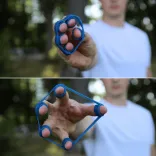
Why Is Training with Finger Trainers Beneficial?
Many people focus primarily on training their grip muscles, the flexors, while often neglecting the extensor muscles. This oversight can lead to muscular imbalances, which are a common cause of wrist or elbow pain, such as golfer’s or tennis elbow.
The finger trainer addresses this issue by allowing you to specifically strengthen the extensors and restore muscular balance. This training not only enhances grip strength but also protects joints and tendons from overuse and injuries.
Easy to Incorporate into Daily Life
Thanks to its compact size, the finger trainer fits easily into any pocket. You can use it anywhere and anytime—whether at home, in the office, or on the go. For effective training, just 1-2 sets per arm are sufficient, which you can easily add to your existing workout routine.
Benefits of the DIE RINGE Finger Trainer Set:
- Promotes muscular balance between flexors and extensors.
- Alleviates and prevents issues like wrist and elbow pain.
- Improves grip strength and prevents injuries.
- Simple and flexible integration into daily life.
Fingertrainer Set
Product information
€15.99
Specifically train the often-neglected extensor muscles of your fingers and forearms with the DIE RINGE Finger Trainer Set. Prevent overuse injuries like climber's/tennis elbow and create a healthy balance to your gripping muscles – with 3 resistance levels.
In stock and ready to ship

Wrist Wraps: Protection and Stability for Your Wrists
Wrist wraps are an essential tool to protect and stabilize your wrists during intense activities. Our specially designed wrist wraps provide reliable support without restricting your range of motion.

Suitable Applications for Wrist Wraps
Wrist wraps are ideal for exercises that place significant strain on the wrists, such as:
Handstands: Provide stability and protection when the entire body weight rests on the wrists.
Push-Ups: Offer support to prevent overuse or pain.
Ring Training: Add extra security during dynamic movements and demanding skills.
Whether you're just starting your training or are already advanced, wrist wraps are a valuable accessory to make your workouts more effective and safer. They give you the confidence to push your limits without jeopardizing your joints.
Wrist Wraps
Product information
€19.99
Maximize your stability during heavy lifts with the DIE RINGE Wrist Wraps. These stiff wrist wraps offer maximum support for calisthenics, strength training, and protect your wrists from bending under load.
In stock and ready to ship

Training Plan for Strong and Healthy Wrists
Targeted wrist training requires patience and gradual progression, especially if it’s new to you or you’re already experiencing pain or discomfort. Wrists are delicate structures that can be strengthened over time but also need adequate recovery periods.
Training Frequency and Rest Days
Perform wrist training 1-3 times a week, depending on your fitness level and experience. Ensure you allow at least one rest day between sessions so your muscles, tendons, and joints can recover properly.
Less Is More – Especially at the Beginning
If you’re new to wrist training or dealing with discomfort, start slowly and with a low intensity. Begin with a few repetitions and light resistance to gently acclimate your wrists to the new movements and loads.
Patience and Gradual Progression
Increasing the intensity too quickly can elevate the risk of overuse injuries. Instead, focus on consistency and gradually build up the intensity. Over time, your wrists will become stronger and more resilient, allowing you to expand your training routine step by step.
Strengthening Wrists – A Training Plan
| Phase | Exercise | Sets | Reps | Pause |
|---|---|---|---|---|
| Warm Up | Wrist Lines | 1 | 30 sec | 15 sec |
| Wrist Figure 8 Rotation | 1 | 30 sec | 15 sec | |
| Mobilization | Wrist Circles Back | 1 | 30 sec | 15 sec |
| Wrist Circles Front | 1 | 30 sec | 15 sec | |
| Strengthening | Wrist Push Ups | 1-2 | 5-15 | 60 sec |
| Finger Trainer Extensionss | 1-2 | 5-15 | 60 sec |
Conclusion: Training Your Wrists for Everyday Life and Sports
Training your wrists is essential—not only for athletic activities but also for daily life. Strong and mobile wrists contribute to stability and resilience while preventing injuries. As we’ve seen, wrist muscles play a central role in numerous movements. Neglecting them increases the risk of immobility, limited performance, and painful overuse injuries.
The exercises outlined here provide an excellent foundation to mobilize, strengthen, and maintain the health of your wrists in the long term. With patience and consistent practice, you can elevate your wrist strength to the next level.
Next Steps: Wrist Exercises and Tools for Effective Training
Want to dive deeper into the topic? Download the DIE RINGE App! In addition to the wrist exercises presented here, you’ll find over 650 tutorials for calisthenics, bodyweight training, flexibility, and mobility. The app offers targeted training plans to guide you toward stronger and more stable wrists.
You’ll also find practical accessories in our shop, such as the DIE RINGE Finger Trainer Set and high-quality wrist wraps. These tools make your wrist training even more effective, help prevent pain, and maximize your progress.
Start Now: Mobilize and Strengthen Your Wrists
Give your wrists the attention they deserve—for a healthier, stronger, and more capable you! Whether you’re a beginner or a pro, combining targeted wrist exercises with supportive equipment will help you prevent injuries and sustainably improve your training.
Calisthenics training, developed by sports scientists and optimized by smart algorithms – for your best workout.

Always motivated
With the DIE RINGE App, it’s easy to make training a habit – thanks to encouraging features and structured workout planning.
Personalized Training Plan
DIE RINGE combines technology and sports science to tailor your training so you work at exactly the right level and pace.
Communicate with real people
Simply shake the app and give feedback to the DIE RINGE team. They constantly improve the app and can help you with your training.
Developed by Sports Scientists
By combining research-based training methods and effective exercises, DIE RINGE creates training plans that successfully help you build strength and muscle.

Always motivated
With the DIE RINGE App, it’s easy to make training a habit – thanks to encouraging features and structured workout planning.

Personalized Training Plan
DIE RINGE combines technology and sports science to tailor your training so you work at exactly the right level and pace.

Communicate with real people
Simply shake the app and give feedback to the DIE RINGE team. They constantly improve the app and can help you with your training.

Developed by Sports Scientists
By combining research-based training methods and effective exercises, DIE RINGE creates training plans that successfully help you build strength and muscle.
